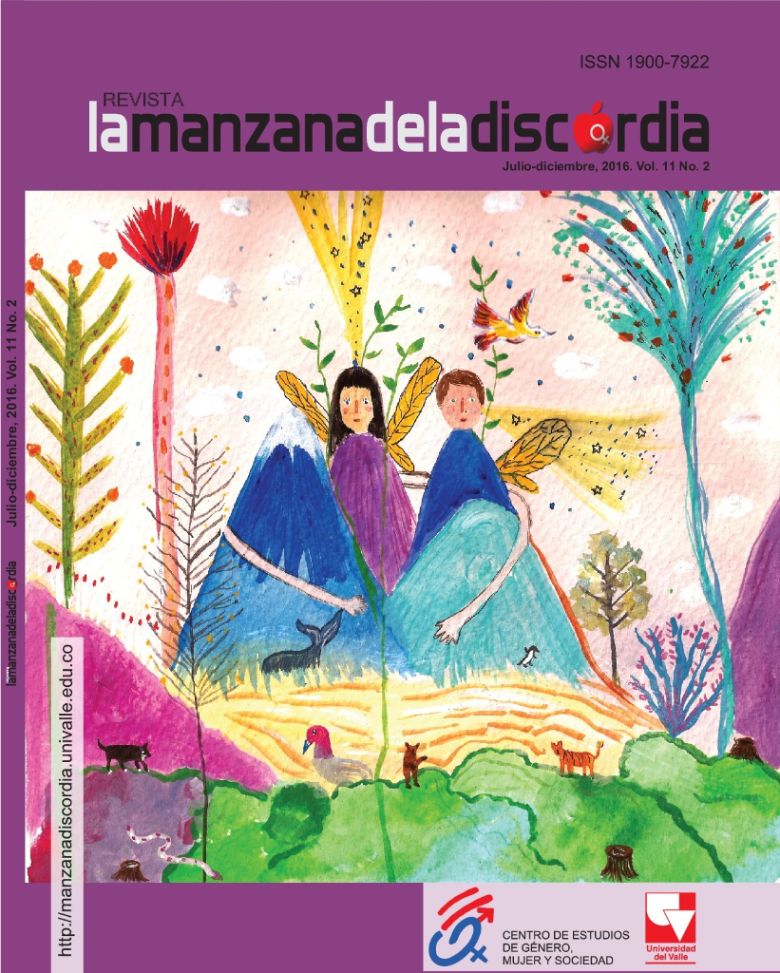Making intersexuality visible through the circulation of Lucia Puenzo's XXY
Palabras clave:
intersexuality, film festivals, XXY, film festivals, film exhibition and circulation, film genre, medical discourse, Lucia PuenzoContenido principal del artículo
This article looks at how the film XXY (Lucía Puenzo, 2007) makes intersexuality visible and transmits to the public identities that question the binaries man-woman and homo-hetero by means of its circulation. By acknowledging the challenges of assessing the film’s sociological impact without carrying out audience research, this is a study that analyses the importance of the film’s form in normalising intersexuality as well as its effect in helping the film circulate across various film festivals. Since film exhibition and circulation are emerging academic fields, this research also needs to look at unconventional sources in order to argue that the film’s circulation enables it to be discussed across multiple platforms and to different audiences. By considering the film’s funding, this article argues that film festivals are platforms which allow films to obtain distribution agreements, and therefore increase their exhibition windows, and also have an important and often unacknowledged role in promoting progressive thinking into society. The article ends by examining how through fiction discourses normally restricted to the academic and medical fields can be mediated to general audiences as exemplified by XXY. In addition, the film’s availability under different genre categories makes it accessible to diverse audiences.
Cabral, Mauro. (2008). No Saber: Acerca de XXY. Clam+10. Accessed 10 December 2015. Available from: http://www.clam.org.br/publique/cgi/cgilua.exe/sys/start.htm?infoid=3956&sid=28
Dale, Pau. (2008). XXY. The List. Accessed 10 December 2015. Available from: https://film.list.co.uk/article/8195-xxy/
Garcia, Rocio. (2008). El Desgarro en un Cuerpo de Dos Sexos. El Pais. Accessed 10 December 2015. Avail-able from: http://elpais.com/diario/2008/01/07/cul-tura/1199660404_850215.html
Gleghorn, Charlotte. (2011). Myth and the Monster of Intersex: Narrative Strategies of Otherness in Lucia Puenzo’s XXY. IN: BERMUDES BARRIOS, N. (Ed) Latin American Cinemas: Local Views and Transnational Connections, Alberta: University of Calgary Press. Pp. 149-174.
Harbord, James. (2002). Film Cultures, London: Sage Publications.
Herdt, Gilbert. (1994). Preface. IN: Herdt, Gilbert. (Ed) Third Sex, Third Gender: Beyond Sexual Dimor-phism in Culture and History, New York: Zone Books. Pp. 11-20.
Holland, Jonathan. (2007). Film Reviews: Cannes: “XXY”. Variety. 407(2). P. 26.
Portalatin, Beatriz. (2012). La Intersexualidad Ya No Se Oculta [Online]. El Mundo. Accessed 10 December 2015. Available from: http://www.elmundo.es/elmundosalud/2012/10/25/noticias/1351184448.html
Ross, Miriam. (2010). South American Cinematic Cul-ture: Policy, Production, Distribution and Exhibition. Accessed 10 December 2015. Available from: https://books.google.co.uk/books?id=wIInBwAAQBAJ&printsec=frontcover&source=gbs_ge_summa-ry_r&cad=0#v=onepage&q&f=false
Rovisco, Maria. (2013). Towards a Cosmopolitan Cinema: Understanding the Connection Between Borders, Mobility and Cosmopolitanism in the Fiction Film. Mobilities. 8(1). Pp. 148-165.
Shaw, Deborah. (2014). Sex, Texts and Money, Funding and Latin American Queer Cinema: The Cases of Martel’s La Nina Santa and Puenzo’s XXY. Transna-tional Cinemas. 4(2). Pp. 165-184.
Stringer, Julian. (2001). Global Cities and the Inter-national Film Festival Economy. IN: Shiel, Mark & Fitzmaurice, Tony. (Eds.) Cinema and the City: Film and Urban Societies in a Global Context. Oxford : Blackwell. Pp. 134-143.
Zamostny, Jeffrey. (2012). Constructing Ethical Attention in Lucia Puenzo’s XXY. IN: Rocha, Carolina & Seminet, Georgia. (Eds.) Representing History, Class, and Gen-der in Spain and Latin America, New York: Palgrave Macmillan. Pp. 189–204. Accessed 10 December 2015. Available from: http://www.palgraveconnect.com/pc/doifinder/10.1057/9781137030870.0016

